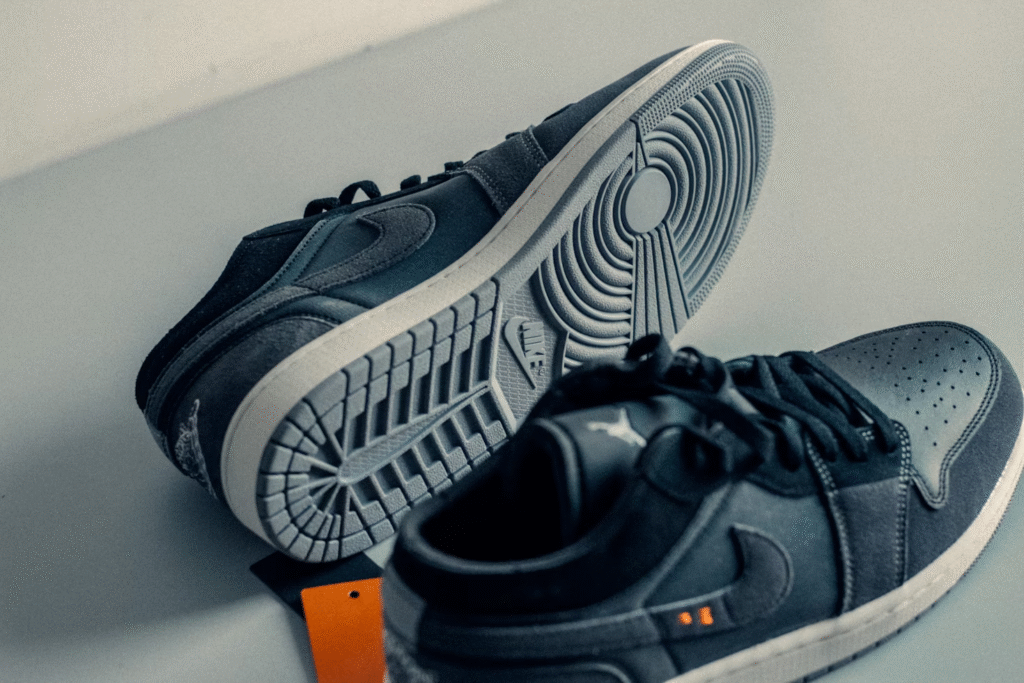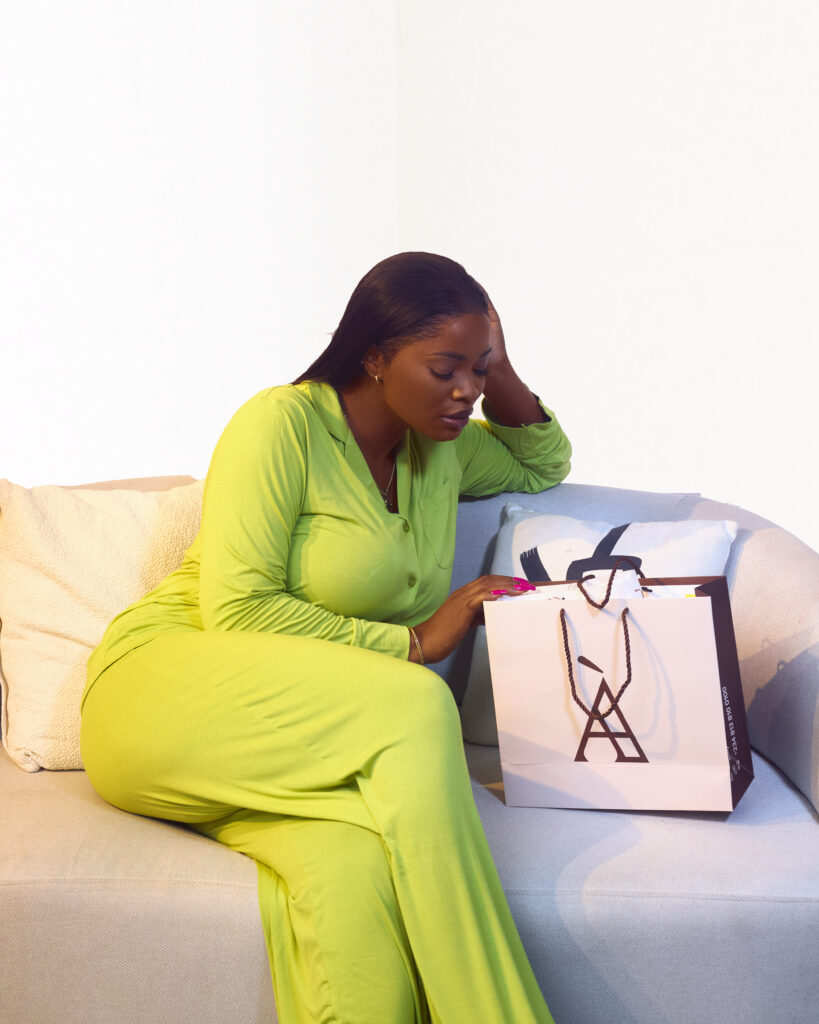Nigeria’s weather is full of surprises.
One moment, you’re sweating under the blazing afternoon sun.
The next, dark clouds roll in, and you’re caught in a heavy downpour. It’s not unusual to leave home feeling overdressed for the heat or underprepared for sudden rain. That’s why choosing the right outfit can feel like a gamble.
But it doesn’t have to be. With the right fabric choices, smart layering, and practical footwear, you can dress in a way that works for both dry and rainy conditions.
The goal isn’t just to stay comfortable, but also to look good and feel confident no matter what the sky decides to throw your way.
In this guide, I’ll share five outfit combinations that adapt perfectly to Nigeria’s unpredictable weather.
Let’s dive in.
1. Lightweight Cotton Shirt + Cotton Trousers

A breathable combination that keeps you cool in the sun and dries quickly after unexpected showers.
Cotton remains one of the most reliable fabrics for Nigeria’s climate. It absorbs sweat, allows air circulation, and is gentle on the skin.
When rain hits, light cotton dries faster than synthetic materials or heavy fabrics. Pairing a cotton shirt with cotton trousers creates a simple but effective outfit that works in both heat and humidity.
Why it works
Cotton naturally regulates body temperature. The fabric lets heat escape, which prevents discomfort during dry spells. When the rain starts, light cotton does not trap moisture for long, so you won’t stay damp for hours.
How to pick the right version
- Look for lightweight cotton instead of stiff or thick varieties.
- Choose loosely woven designs that promote airflow.
- Stick with light colors like cream, sky blue, or beige, which reflect sunlight and keep you cool.
How to style it
- Roll up your sleeves to improve ventilation.
- Pick trousers hemmed slightly above the ankle so they don’t drag in puddles.
- Carry a small umbrella or foldable raincoat to protect against showers.
When to wear it
This combination works perfectly for work commutes, market runs, or casual outings where comfort matters as much as appearance.
2. Polo Shirt + Chinos

A smart-casual combo that balances style, breathability, and quick recovery from light rain.
Polos are versatile. They’re often made from cotton or cotton blends, which allow airflow while offering a polished look.
Chinos add structure without being as heavy as denim. Together, this combo is ideal for Nigeria’s unpredictable weather.
Why it works
Polos allow sweat to evaporate faster than button-downs. Chinos, on the other hand, dry faster than jeans and feel lighter on the skin. The pairing is smart enough for casual workdays yet relaxed enough for social gatherings.
How to pick the right version
- Choose polos that are slightly loose to allow ventilation.
- Opt for chinos with a touch of stretch so they remain comfortable in humidity.
- Avoid chinos with heavy lining or very tight cuts.
How to style it
- Wear the polo tucked for work or untucked for casual settings.
- Select belts and accessories that won’t get damaged by rain.
- Pair with breathable loafers or sneakers that dry easily.
When to wear it
Perfect for casual Fridays, after-work hangouts, and events where you’ll move between indoor and outdoor spaces.
3. Midi Dress or Kaftan

An easy, airy outfit that keeps you cool in the heat while staying practical during sudden rainfall.
Midi dresses and kaftans are especially popular among women in Nigeria, and for good reason. They provide coverage, allow free movement, and keep the body cool.
The mid-length design ensures you avoid muddy splashes during rainy weather, while the loose fit allows air to circulate in dry heat.
Why it works
Midi dresses and kaftans strike the right balance between comfort and protection. They shield the skin from direct sun, reduce sweat buildup, and dry faster than heavy or layered clothing.
How to pick the right version
- Stick with natural fabrics such as cotton, linen, or bamboo blends.
- Select cuts that allow freedom of movement, like A-line or shift designs.
- Choose prints or neutral tones that hide small watermarks.
How to style it
- Pair with a scarf or shawl that doubles as light sun protection or a rain shield.
- Use waterproof sandals or shoes with rubber soles.
- Keep a light poncho in your bag for unpredictable downpours.
When to wear it
Great for church, casual meetups, and days when you’ll spend time both indoors and outdoors.
4. Light Jacket Over a T-Shirt

A practical layering option that protects against sudden showers without overheating in the sun.
The trick here is layering. A T-shirt keeps you cool during hot spells, while a light jacket shields you when rain or wind shows up.
The jacket can be removed or packed away easily when the weather clears.
Why it works
Layering gives flexibility. You’re never overprepared or underprepared. A lightweight, water-resistant jacket prevents you from being drenched during sudden rainstorms without weighing you down.
How to pick the right version
- Go for jackets made of water-resistant fabric like coated nylon.
- Choose versions with a hood for extra rain protection.
- Make sure it folds easily so you can carry it in a backpack.
How to style it
- Wear plain cotton T-shirts underneath to stay cool.
- Pair with jeans, chinos, or skirts depending on the occasion.
- Pick a jacket color that matches multiple outfits so you can rotate it often.
When to wear it
Perfect for commuting, evening events, or travel when you expect unpredictable weather.
5. Smart Sneakers or Loafers

The right footwear can keep your feet dry during rain while staying breathable in the hot sun.
Shoes often make or break your outfit during weather swings. Sandals may be fine for heat, but they fail in floods.
Heavy boots trap heat. Sneakers and loafers strike the right balance: light enough for hot days, durable enough for wet ones.
Why it works
Smart sneakers often come with breathable mesh designs that allow airflow, while loafers can be made from treated leather that resists water.
Rubber soles give grip on slippery, rain-soaked roads.
How to pick the right version
- Look for sneakers made from quick-dry fabrics.
- Avoid suede, which easily gets damaged in water.
- Select loafers with a water-resistant coating.
How to style it
- Pair sneakers with jeans, chinos, or casual dresses.
- Keep spare sandals or slippers in your bag for indoor changes.
- Clean your shoes immediately after rain to extend their life.
When to wear it
Ideal for long walks, commuting, or casual gatherings where you need both comfort and style.
Extra Tips for Dressing Smart in Nigeria’s Weather
Small adjustments make any outfit more weather-proof and stress-free.
- Layer smartly: A lightweight raincoat or umbrella makes all the difference.
- Think fabrics: Stick to natural, breathable fibers like cotton or linen.
- Color choices matter: Light colors reflect the sun, dark colors hide rain spots.
- Fit is key: Loose cuts allow better ventilation and quicker drying.
- Plan your day: If you know rain is likely in the afternoon, keep lighter options for morning and carry a backup layer.
What to Avoid
Some fabrics and designs simply don’t suit Nigeria’s unpredictable weather.
- Heavy wool or thick denim, which traps heat and dries slowly.
- Fully synthetic fabrics like polyester make sweating worse.
- Suede shoes, which easily spoil in water.
- Tight clothing that restricts airflow and comfort.
Final Thoughts
The weather in Nigeria changes without warning. But the right outfits make it easier to move through your day without stress.
Stick with breathable fabrics, light layers, and smart footwear. Each outfit in this list gives you flexibility, comfort, and confidence, no matter the forecast.
Try one of these combos this week. Pair a cotton shirt with trousers, or throw on a midi dress with weather-proof sandals.
Once you experience the comfort, you’ll never go back to dressing for just one type of weather.
Recommended Reading:
7 Sleepwear Tips for the Rainy Season in Nigeria
5 Ways to Stay Cool at Night Without AC in Dry Season
7 Ways Quality Sleepwear Helps You Relax After a Long Day
The Psychology Behind What You Wear to Bed
Why Quality Sleepwear Matters More Than You Think
3 Fabric Types Nigerians Should Avoid for Hot Nights
5 Tips to Keep Your Sleepwear Soft After Many Washes




